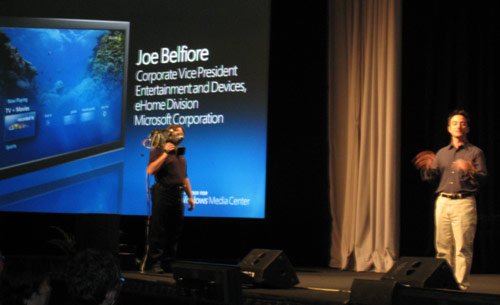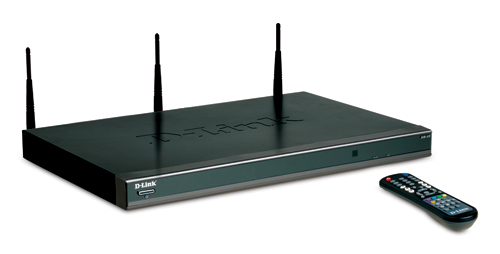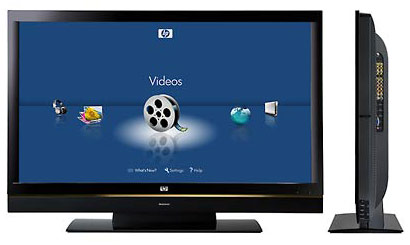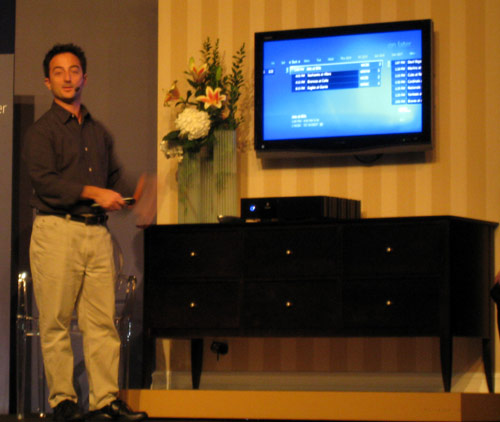Microsoft Invades the Living Room with 3rd Party Media Center Extenders
By Chris Boylan
For the past few years, Microsoft has been making an effort to get their technology into more places - beyond the computer and into the living room, the kitchen, even the bedroom. Previously, sharing media within your household (the Microsoft way) has been possible only via laptop or desktop computers in every room, or at least an XBOX 360. Yes, in addition to being a next generation high definition-capable gaming console, the XBOX 360 is also a "Media Center Extender."
A Media Center Extender allows you to access media files (music, photos and videos) on a connected computer running Windows Media Center, all via an intuitive easy-to use interface. You can even watch and record live HDTV broadcasts via cable or over-the-air, via an optional ATSC tuner on the connected PC.
Making the XBOX 360 a Media Center Extender allowed XBOX owners, who presumably have the XBOX hooked up to their main televisions, to access their media files without needing to plug their computers directly into their televisions. As long as your XBOX is connected to your home network, you can access all of your movies, music and photos from your XBOX and display them on your main TV. But many people don't own, and don't want to own, gaming consoles. So the goal has always been to get other companies to play along, to embed Media Center Extender support into their devices. And now that day has arrived.

Microsoft took the stage at Javits Center this morning to announce a new generation of Media Extenders.
Four consumer electronics manufacturers have announced plans to support Media Center Extender (MCE) in existing or upcoming products. Niveus Media, D-Link, Linksys and HP are all joining the MCE family with a variety of different products. HP went so far as to say that their existing MediaSmart TVs, already in customers' homes, will be upgradeable via software to support Media Center Extender early in 2008. Embedding the technology into a television is probably the ideal deployment, as it does not require any additional components in the living room, bedroom or home theater system.
Another vendor supporting Media Center in a multi-purpose device is Cisco's Linksys division, with their DMA2200 ($349) DVD player. In addition to offering full Media Center Extender support, the DMA2200 is an upconverting DVD player that will take existing DVDs and upconvert them to 720p or 1080i resolution. It also includes support for the popular Divx and Xvid video codecs, which are used by many content producers who distribute videos over the internet. The device supports a wired connection to your home network, or a wireless connection via the 802.11n high speed wireless protocol.
With 802.11n, it's possible to stream files with full high definition resolution, something that can't be said for earlier Wi-Fi protocols (802.11a,b and g). For those who already own a DVD player and don't mind having a separate (smaller) box, the Linksys DMA2100 ($299) does the same thing, just without the DVD player. Both devices are expected to be available in November.
From D-Link comes the DSM-750 MediaLounge HD Media Center Extender ($349.99), housed in a sleek 17-inch black aluminum chassis, with both wired and wireless networking (802.11n). The DSM-750 lets you enjoy HD videos with resolutions of up to 1080i, including support for WMV, DivX, and XVid formats, as well as a USB 2.0 port for direct access to music, photos and videos stored on removable USB flash drives or hard drives.

D-Link's DSM-750 MediaLounge Media Center Extender.
HP's MediaSmart LCD HDTVs, currently available in 42-inch and 47-inch sizes, will support Extender for Windows Media Center technology through a software download, expected to be available in early 2008. The MediaSmart televisions support 1080p video, 802.11n wireless, DivX, XVid, WMV and other video formats. Although existing MediaSmart owners can already access photos, music, videos, and movies by connecting their TV to their wired or wireless home network, Media Extender functionality will provide them enhanced features -- such as controlling live TV and accessing Windows Media Center Internet TV -- all accessible via the TV's remote control.

HP's MediaSmart HDTVs will become Media Center Extenders via a software update in early 2008.
Designed for the high-end home theater enthusiast, the Niveus Media Extender EDGE offers a high fidelity experience, uncompromised 1080p video, digital audio, and the unique 3D user interface found on current Niveus Media Centers. Additionally, the Niveus Media Extender features the proprietary Niveus Glacier™ Passive Cooling system for cool and quiet performance and a sleek and stylish A/V form-factor. The Niveus Media Extender EDGE is expected to be available in early November. Pricing has not yet been announced.
The products were shown by Microsoft's Joe Belfiore who is apparently not only a Microsoft VP, he's also a client. In a live demo of the devices and technology at the Digital Life show in New York this morning, Joe showed us how easy it was to share photos and videos of his adorable kids within the home network, and even on the internet, using the Windows Live Spaces service. Apparently his 4-year-old son's favorite "shows" are photos and videos of himself and his family. And with Media Center extenders, it's easy as pie to make these available on TV, using a simple remote control and graphical menu.
Unlike Bill Gates' infamous blue screen of death demo. Joe's demo went off without a hitch, even when he demonstrated the new beta release of "Internet TV" - a streaming media feature that will go live for all users of Windows Media Center Edition this week, with over 100 hours of "ad-supported" streaming videos to choose from.

Microsoft's Joe Belfiore successfully demonstrates new extenders and new "Internet TV" functionality in Windows Media Center.
Also, Microsoft announced (and demonstrated) a web-browser-based version of the Media Center user interface, which allows you to access your media files and recorded television shows from anywhere on the Web. Take that, Slingbox!
All in all, it was a pretty impressive demo, and it got me feeling guilty about how my own family's pictures and videos are sitting around trapped in my computer instead of being enjoyed by the family on the big screen. Windows Media Center... here I come!



